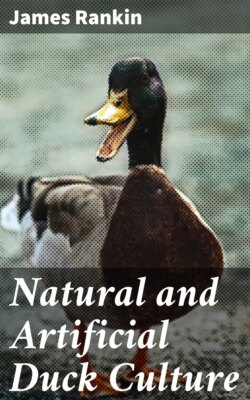Читать книгу Natural and Artificial Duck Culture - James Rankin - Страница 26
На сайте Литреса книга снята с продажи.
The Superiority of Artificial Poultry Growing.
ОглавлениеTable of Contents
We predict a great future for artificial poultry growing. It is yet in its infancy. The time will come when it will gradually supersede many of the regular farm crops on the sterile soil of New England, when every farmer will have his proper complement of poultry appliances, and when you can prove to the average farmer that the capital necessary to run a poultry plant (which will with less labor ensure him a greater income than that from his whole farm) is less than one-fourth of that required for any other farm investment. You will begin to see him scratch his head to evolve ideas. The beginner in starting, should recollect that this is a business of detail and that small things must be taken into account. It is not only a very essential thing to choose the best breeding stock that can be had, but, all other conditions being the same, to select the color of their feathers.
We have always had a predilection in favor of white birds, for the feathers (which are no small item in ducks) command nearly double the price of colored ones, and are always more saleable. Again, we must cater for the market with young birds, and every one knows that young birds are more or less addicted to pinfeathers, many of which it is very difficult to remove, as they have secured a lodgment just under the skin, but have not found their way through. Now a dark pinfeather is a blot upon the fair surface of a fine chicken or duck, and the thrifty housewife in selecting her dinner will always leave the pins behind. She does not like a variety of colors in her duckling, if she does in her dress. The dealer, aware of this peculiarity of the ladies (who, by the way, form a large share of his customers) will, if he buys at all, cut you on the price.
Unfortunately we started in with dark birds, but it did not matter at that time, as the Pekin had not been imported, and there were very few Aylesburys in the country. We were surrounded by vermin of all kinds. Our young birds disappeared mysteriously, and in such large numbers that we were nearly discouraged. Hawks do not trouble ducks, but rats, weasels and minks developed such a fondness for them as to completely atone for any neglect on their part. We made a free use of steel traps, guns, and phosphoretic poison. The battle raged for two years; at the end of that time I think it would be difficult to find one of the above-mentioned vermin one-fourth of a mile from the place. It was a great relief; our ducklings could range at will, even be left out during the night, and still the full complement appear at the dough-troughs in the morning.
